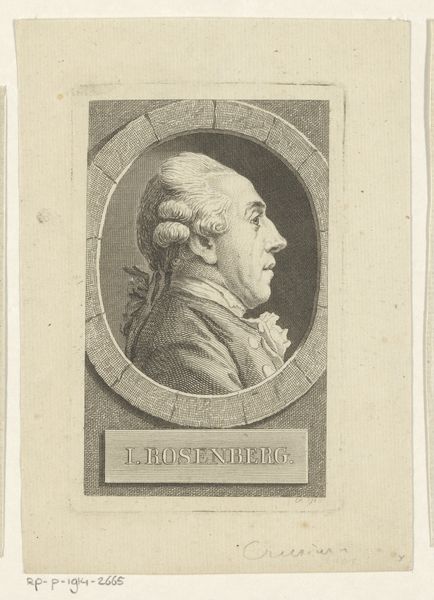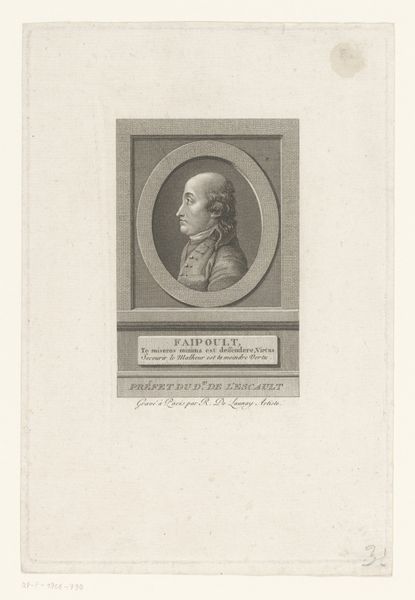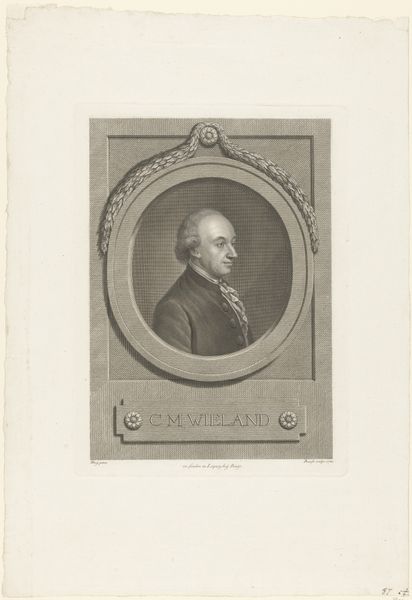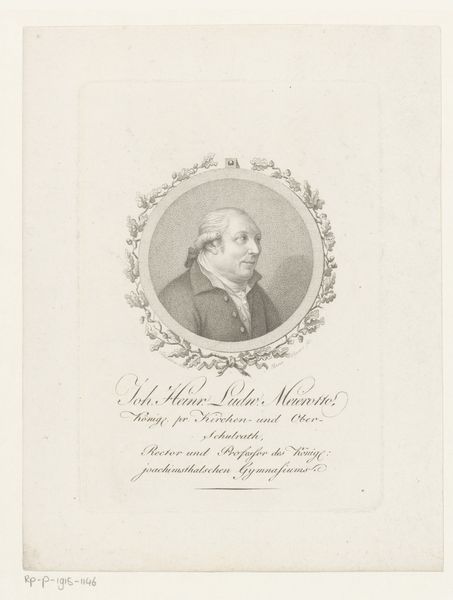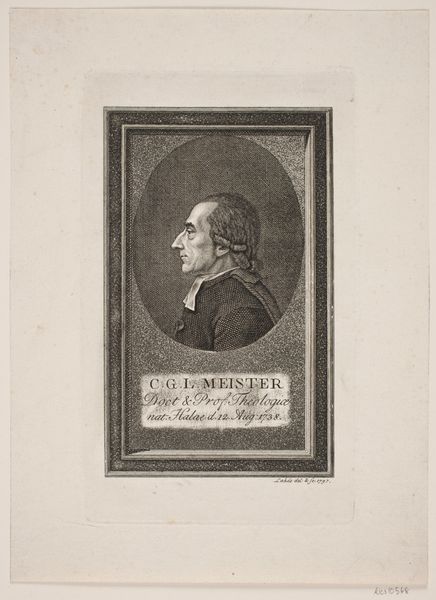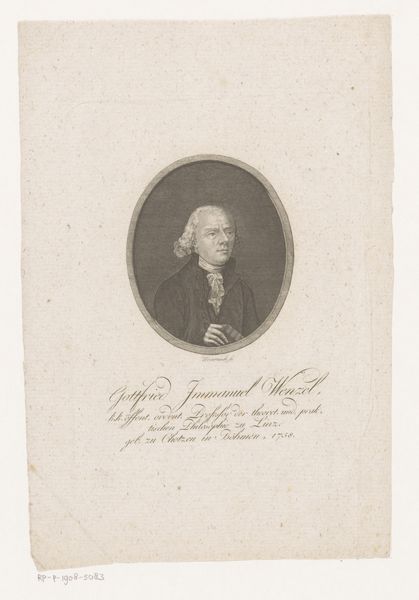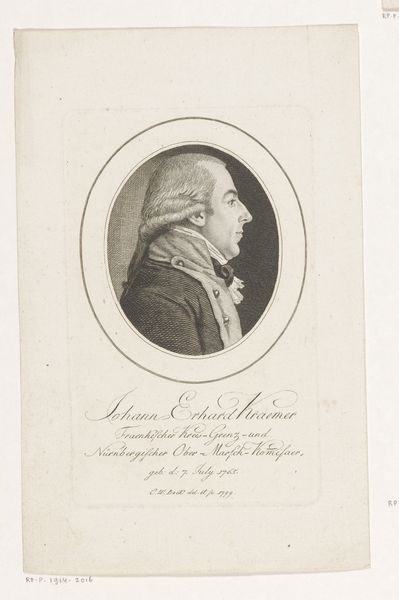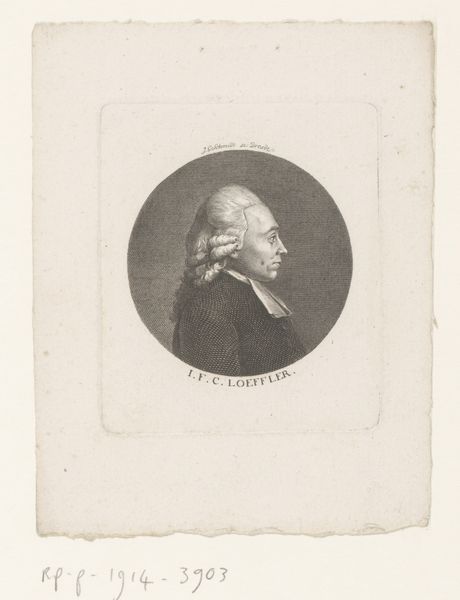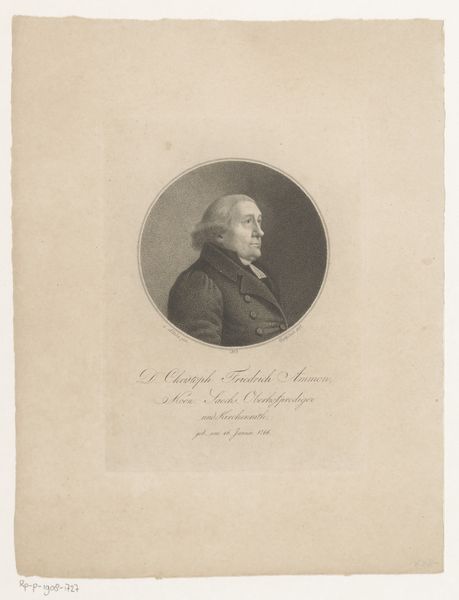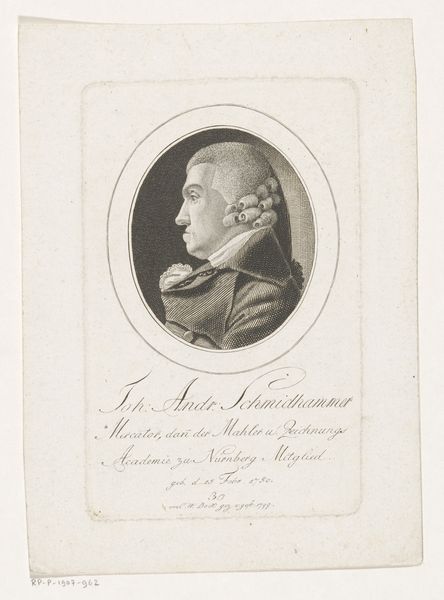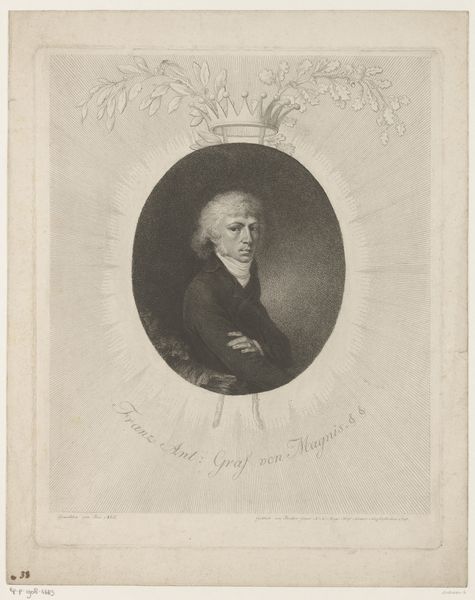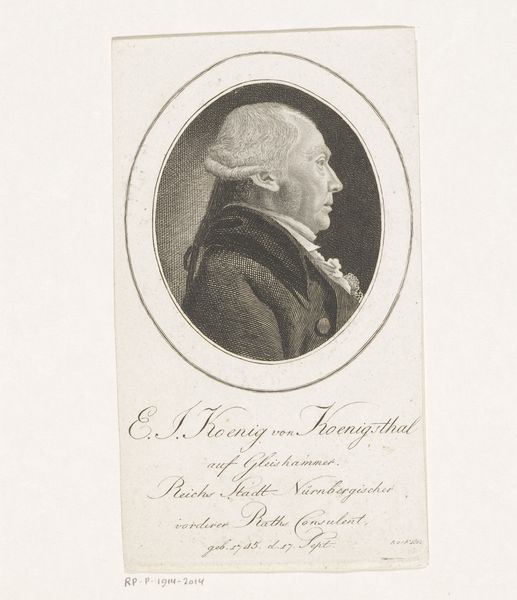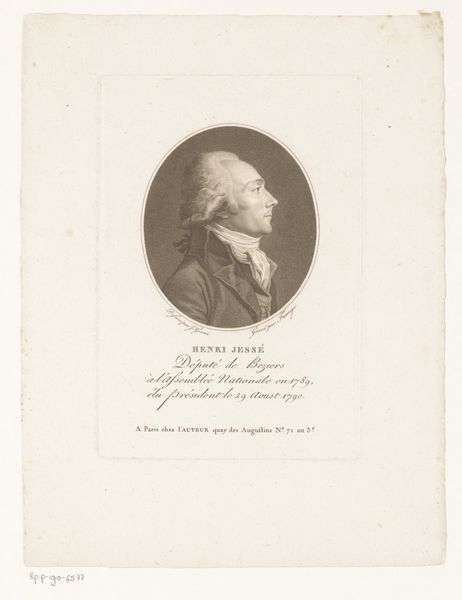
paper, engraving
#
portrait
#
neoclacissism
#
old engraving style
#
classical-realism
#
paper
#
engraving
Dimensions: height 133 mm, width 83 mm
Copyright: Rijks Museum: Open Domain
Curator: Look at this intriguing portrait! It's an engraving on paper created between 1780 and 1836 by Johan Friedrich Schrötter. The work is entitled "Portret van Joseph Lenhardt". Editor: It feels intensely controlled, wouldn't you say? That precision in the line work. The small scale seems like a conscious decision, and perhaps a result of the tools and skills available for printing? Curator: I see a clear statement on identity, too. The portrait form here positions Lenhardt in dialogue with ideals of leadership, civic duty and power. We also must question how Lenhardt may have chosen to present himself, which speaks to agency in the creation of his own public persona. How does he want to be remembered? Editor: Right, and consider the sheer labor in the production! Each line etched into the plate. Think of the skilled artisans reproducing images like this at scale. Were they valued? How did that social hierarchy work between artist, engraver and printer? The material reality of that production impacts what we see. Curator: I agree, although focusing too much on production may minimize the impact that the sitter's persona and presence have on how one interprets the artwork. His profile is certainly dominant! Think of how portraiture operated within systems of class and representation in that time period. Who was being excluded from those depictions? How can it be made inclusive? Editor: Of course, systems of power are integral to understanding the piece! What about the quality of the paper itself? Was it hand-made or machine produced? These choices can give more understanding as to whom the portrait was made for. Everything in front of us came about from both available materials, and artistic intentions. Curator: Definitely food for thought. Considering who this was meant for, looking into the inscriptions at the bottom is certainly worthwhile, especially given the questions of the individual's social standing and what their status and importance were. It brings a different insight than the mere fact that this was rendered on paper and engraved in an artisanal studio. Editor: And there you see the full picture, right? How context informs production and materiality which then reflects in turn back onto the content. To study this era through art will shed light on a time and a process that’s vital for art to exist in the first place.
Comments
No comments
Be the first to comment and join the conversation on the ultimate creative platform.
